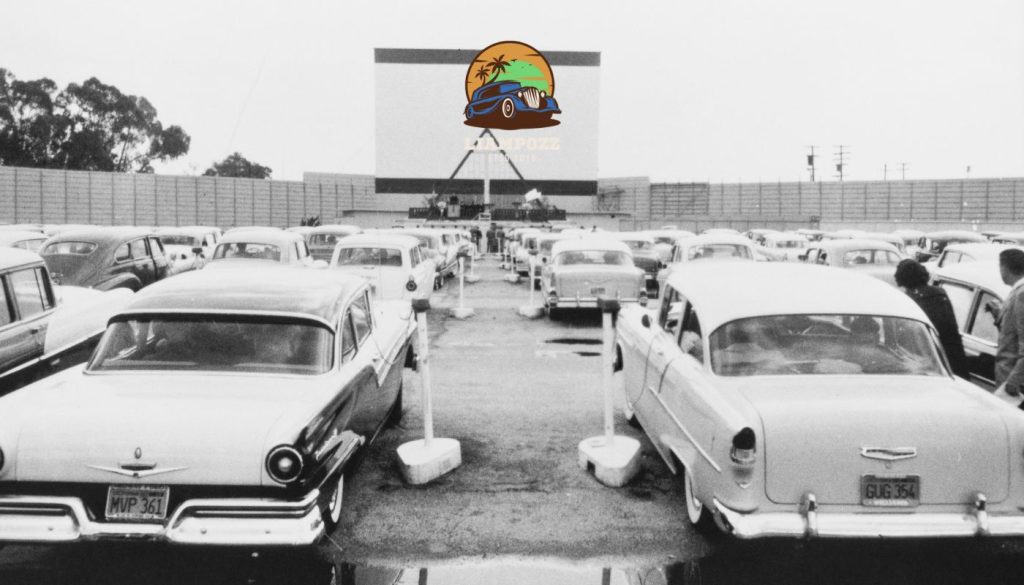Vintage cars are a fascinating and beloved aspect of automotive history. They evoke a sense of nostalgia and hold a special place in the hearts of car enthusiasts and collectors worldwide. But what exactly defines a vintage car? Is it simply a matter of age, or are there other factors at play? In this comprehensive article, we will explore the various aspects that determine whether a car can be considered vintage.
What’S The Difference Between A Classic And Vintage Car?

When it comes to classic cars, there are a few things that set them apart from vintage cars. Generally, classic cars are those that were built between the 1920s and 1970s, while vintage cars are those that were built before 1920. However, there are some exceptions to this rule, Classic cars are often thought of as being more valuable and valuable to own than vintage cars. This is because classic cars are often in better condition and have been restored to their former glory. They also tend to have more historical value than vintage cars.
Vintage cars, on the other hand, are often more affordable than classic cars. They may not be in as good of condition as classic cars, but they still offer a unique driving experience. Plus, they have a ton of character that you won’t find in a classic car, If you’re looking for a car that’s both classic and vintage, you may want to consider a car that’s considered a “classic vintage .” A classic vintage car is a car that was made between 1925 and 1948. These cars are often considered to be some of the most beautiful cars ever made, and they’re also some of the most valuable. If you’re looking for a car that will turn heads, a classic vintage car is a great option.
One thing to keep in mind if you’re considering buying a classic vintage car is that they often require a lot of maintenance. These cars are often older and have been around for longer, so they may need more work than a newer car. However, if you’re willing to put in the time and effort, a classic vintage car can be a great investment.
If you’re looking for a classic vintage car, there are a few things to keep in mind. First, make sure you know what you’re getting into. These cars require more maintenance than newer cars, so be prepared to spend some time and money on upkeep. Second, make sure you find a reputable dealer or seller. There are a lot of scams out there, so it’s important to do your research. And finally, be sure to have a good idea of what the car is worth. There’s a big difference between what a car is worth and what you’re willing to pay for it. So take your time, do your research, and find the perfect classic car for you.
Distinguishing Terms: Vintage, Classic, and Antique

The term “vintage car” is often used interchangeably with “classic car” or “antique car.” While there may be some overlap between these categories, they each have their own distinct characteristics. Antique cars are typically those built before 1919, whereas classic cars are generally considered to be vehicles produced between the 1920s and the 1970s. Vintage cars, on the other hand, are a bit more difficult to define precisely.
The Role of Age in Determining Vintage

One of the primary determining factors for a car to be considered vintage is its age. However, there is no universally agreed-upon threshold that establishes when a car becomes vintage. Some experts argue that a vehicle must be at least 25 years old, while others contend that it should be older than 30 or even 50 years. Ultimately, the age requirement may vary depending on the context, region, or specific car club or organization one is referring to.
There are several reasons why cars become more desirable as they age. In many cases, they are simply more rare and harder to find. Additionally, many vintage cars have unique styling that can’t be found in modern vehicles. Finally, many people believe that older cars are more mechanically reliable and have been built with better-quality materials.
While there are many benefits to owning a vintage car, there are also a few things to keep in mind. First, older cars often require more maintenance and care than newer models. Additionally, they may not be as fuel-efficient or comfortable to drive. Finally, the value of vintage cars can vary significantly, so it’s important to do your research before making a purchase.
Beyond Age: Rarity, Significance, and Desirability

Age alone, however, does not make a car vintage. Other factors come into play, such as rarity, historical significance, and desirability. Vintage cars are often sought after for their unique design, engineering, or cultural significance. They are typically associated with a particular era or period in automotive history and carry a sense of craftsmanship and attention to detail that may be lacking in modern vehicles.
For these reasons, many vintage cars are considered collectors’ items and can be quite valuable. Some rare and exotic models can sell for millions of dollars at auction. While there are many vintage cars on the market, the most valuable tend to be those from the early days of the automobile industry, such as the early 1900s and 1920s.
So, if you’re looking to buy a vintage car, it’s important to do your research and understand what makes a car valuable. There are many factors to consider, including age, rarity, and condition. Be sure to consult with a reputable car expert or auction house to get an accurate estimate of a car’s value.
The Allure of Limited Production

Furthermore, vintage cars are often recognized for their limited production numbers. Many iconic models were only produced for a short period or in small quantities, making them highly sought after by collectors. These rare and exclusive vehicles often command high prices in the marketplace, reflecting their desirability and scarcity.
Many vintage car enthusiasts are passionate about restoring and preserving these classic automobiles. They view their vehicles as pieces of art, and take great pride in their ownership. In fact, many collectors are so dedicated to their hobby that they spend years tracking down the rarest and most unique cars available.
If you’re interested in vintage cars, it’s important to learn about the different models and their values. By doing your research, you’ll be able to identify the most desirable vehicles and understand why they’re so sought after. In addition, you’ll be better equipped to negotiate prices when you’re ready to make a purchase.
The Impact of Condition: Originality and Restoration
Another important aspect to consider is the condition of the car. While some enthusiasts argue that a vintage car can be in any condition as long as it meets the age criteria, others emphasize that it must be in an original or restored state. Originality refers to a car that has retained its factory specifications, including its paint, interior, and mechanical components. Conversely, a restored vintage car has undergone a thorough refurbishment to bring it back to its original condition or better.
The debate over originality or restoration is subjective and depends on the personal preferences of the car owner. Some people prefer to drive a car that is original and unmodified, while others appreciate the craftsmanship and time that goes into restoring a vintage car. Ultimately, the decision comes down to the individual and what they value most in a vintage car.
Additional Influences on Classification
In addition to age, rarity, historical significance, and condition, there are other factors that can influence whether a car is considered vintage. These include cultural and social factors, such as the popularity and impact of the vehicle during its time. Cars that were groundbreaking in terms of design, performance, or technology are often regarded as iconic and are more likely to be considered vintage.
For example, the original Volkswagen Beetle, the Ford Mustang, and the Chevrolet Corvette are all considered classic cars, even though they were all manufactured in the latter half of the 20th century.
Legal Definitions and Evolution of the Term
Moreover, legal definitions and regulations can also affect how vintage cars are classified. Some jurisdictions have specific criteria for vehicles to be registered as vintage, which may include restrictions on usage, eligibility for special license plates, or even tax benefits. These legal definitions may vary from one country to another or even between different states or provinces within a single country.
A Shifting Definition with Lasting Appeal
It is important to note that the classification of a car as vintage is not set in stone. As time passes, the definition may evolve, and new models may be added to the vintage category. Additionally, the subjective nature of the term means that individual opinions and personal preferences can also influence what is considered vintage.
Conclusion Celebrating the Vintage Legacy
In conclusion, while there is no definitive answer to what constitutes a vintage car, age, rarity, historical significance, desirability, condition, and cultural factors all play a role in determining this classification. Vintage cars are cherished for their connection to automotive history, their unique design, and their ability to evoke a sense of nostalgia. Whether through legal definitions, club or organization rules, or individual opinions, the term “vintage car” holds a special place in the hearts of car enthusiasts worldwide.





